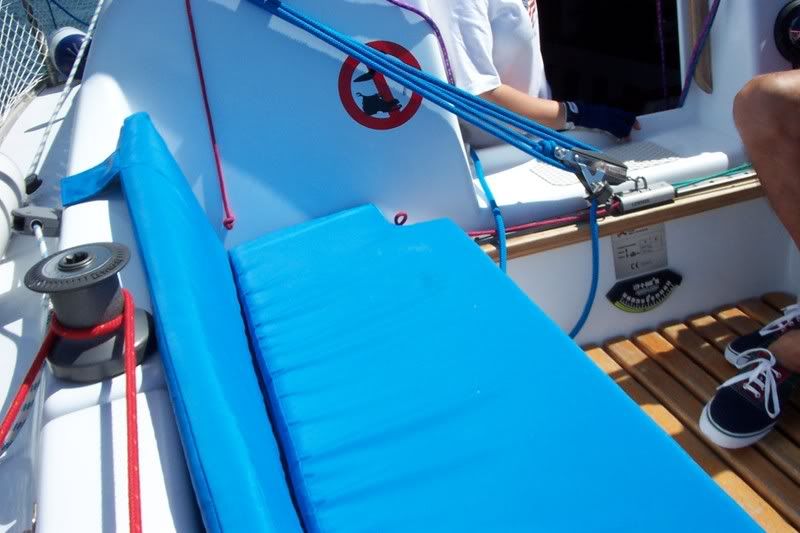This is a little like SemiJim's post, but I've got to deal with a genoa sheet. Obviously, the location of the block would change with the size of sail, 100-120-150-170, but I have drawn a simple example just to help out.
If you can't read it, I'll try my hand with fireworks to get a good computer photo made up.
I have it running back from the sail to a turning block on the rail, then up to a winch. In almost any condition this is a huge PITA to singlehand this boat with both sails up. I need three hands to hold the helm, main and lastly the jib.
In higher winds, I don't like cleating them because I want to be able to let them blow out -- the breezes here are never the same, and if the wind blows, it is usually in front of a big storm so get ready to hang on to your panties!
I have a picture drawn up here, maybe this will help with how I should be routing the lines from the sheet:
Questions:
1 Is there a way to increase purchase on the jibsheet to be able to trim it in where I am not destroying my hands or turning my little sausages blue over a period of a few hours?
2 Is it OK to route around a winch (bottom picture) to the other winch so I can sit on the weather side? I don't like sitting on the low side, it changes my visibility.
3 Are all three of my boats with staysails designed to cleat and winch off of the low side, or am I on crack and I am routing these wrong? Geez it would have helped to get an instruction book with at least one of these boats!
4 How are you guys holding the two sheets and helm at once? I generally hold both in one hand and the wheel in the other, or use my helmer to hold me on course while I fiddle with one line in each hand, IF I CAN'T FEEL COMFORTABLE CLEATING OFF BECAUSE OF GUSTS (of course)
I can't recall asking this question to myself when I was out sailing with other people, so I can't remember how they were doing it, and why I'm asking here.
If you can't read it, I'll try my hand with fireworks to get a good computer photo made up.
I have it running back from the sail to a turning block on the rail, then up to a winch. In almost any condition this is a huge PITA to singlehand this boat with both sails up. I need three hands to hold the helm, main and lastly the jib.
In higher winds, I don't like cleating them because I want to be able to let them blow out -- the breezes here are never the same, and if the wind blows, it is usually in front of a big storm so get ready to hang on to your panties!
I have a picture drawn up here, maybe this will help with how I should be routing the lines from the sheet:
Questions:
1 Is there a way to increase purchase on the jibsheet to be able to trim it in where I am not destroying my hands or turning my little sausages blue over a period of a few hours?
2 Is it OK to route around a winch (bottom picture) to the other winch so I can sit on the weather side? I don't like sitting on the low side, it changes my visibility.
3 Are all three of my boats with staysails designed to cleat and winch off of the low side, or am I on crack and I am routing these wrong? Geez it would have helped to get an instruction book with at least one of these boats!
4 How are you guys holding the two sheets and helm at once? I generally hold both in one hand and the wheel in the other, or use my helmer to hold me on course while I fiddle with one line in each hand, IF I CAN'T FEEL COMFORTABLE CLEATING OFF BECAUSE OF GUSTS (of course)
I can't recall asking this question to myself when I was out sailing with other people, so I can't remember how they were doing it, and why I'm asking here.











